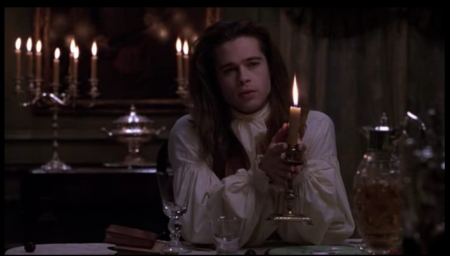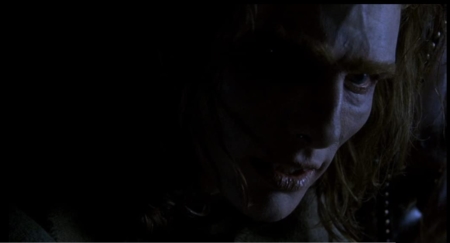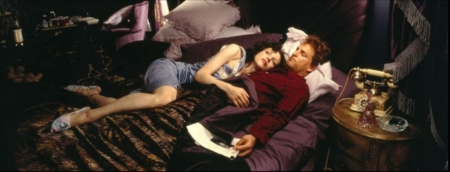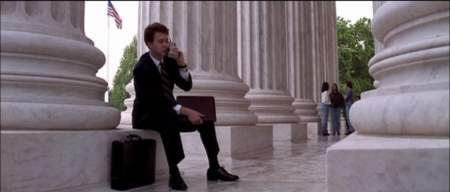
Plusieurs rencontres de cette édition 2021 de Camerimage ont mis l’accent sur l’aspect collectif et collaboratif du cinéma. Une masterclass a réuni le directeur de la photographie Philippe Rousselot, ASC, AFC et le cadreur Anastas N. Michos, ASC, qui ont travaillé ensemble sur de nombreux longs-métrages et ont livré leurs réflexions communes, émaillées d’anecdotes illustrant non sans humour leur complicité.
L’origine de cette rencontre résulte du constat fait par Rousselot que bien qu’il avoue se comporter parfois de façon tyrannique sur un plateau, il se sent pourtant comme un véritable anarchiste, qui n’aime ni commander ni respecter une hiérarchie.
Si en France aujourd’hui le chef opérateur s’occupe le plus souvent à la fois de la lumière et du cadre, aux États-Unis la règle est au contraire de séparer les deux postes, d’une part pour respecter les règles syndicales mais aussi car sur les très gros projets il y a déjà énormément à faire en lumière et ce serait donc trop pour le directeur de la photo de s’occuper aussi du cadre.
Ce besoin de diviser le travail de l’image s’est amplifié avec la complexification des outils, ainsi qu’avec le passage au numérique, qui, avec l’apparition des retours vidéo, a peu à peu éloigné le réalisateur de la caméra. Le directeur de la photographie a besoin d’être près du metteur en scène pour discuter des plans et n’a ni de temps ni d’énergie à perdre en allers-retours… Enfin, lorsque trois ou quatre caméras tournent en même temps, autant laisser les cadreurs gérer leurs positions et mouvements pour ne pas empiéter sur leurs champs respectifs, il y a déjà suffisamment à faire pour régler la lumière pour l’ensemble des cadres !
Aujourd’hui devenu directeur de la photographie, Michos raconte avoir énormément apprécié sa place de cadreur car il n’avait qu’à se concentrer sur comment exécuter le mieux possible chaque plan, tandis que le directeur de la photo doit s’occuper non seulement de faire la meilleure lumière possible, mais aussi de discuter de la mise en scène avec le réalisateur, ainsi qu’avec le premier assistant réalisateur (notamment pour la gestion de la figuration), échanger avec l’équipe décoration, gérer toute l’équipe ainsi que le timing ! Ce qui l’oblige parfois à tourner bien qu’il ne soit pas totalement satisfait pour ne pas sacrifier le reste des plans et de la séquence. Parfois ce qui est mieux pour un plan n’est pas ce qui est le mieux pour un film, si c’est est trop coûteux financièrement ou en temps passé. Il faut toujours garder à l’esprit qu’il ne s’agit pas de faire un « plan chef d’œuvre » mais de tourner un film. D’autre part, ayant eu la chance d’être opérateur pour des directeurs de la photographie talentueux, Michos a pu beaucoup apprendre sur la lumière en les regardant travailler.
Le directeur de la photo reste responsable du choix de l’opérateur
S’il faut savoir reconnaître qu’il y a des gens meilleurs que soi pour certaines tâches, le directeur de la photo reste responsable du choix de l’opérateur, et cela implique d’avoir de hautes attentes envers lui. Rousselot explique rechercher un cadreur qui serait un « clone idéalisé de lui-même », car il aurait tendance à être plus indulgent envers lui-même. De leurs échanges transparaît le partage d’une grande exigence dans le professionnalisme et la qualité du travail de chacun. Les deux évoquent la dimension virtuose du cadreur, qui au contraire du directeur de la photo tient un instrument dans ses mains et se doit de le maîtriser à la perfection.


« Entretien avec un vampire » de Neil Jordan
Michos raconte ainsi que le premier jour du tournage d’« Entretien avec un vampire », Rousselot, qui était en train de construire sa lumière, l’interroge pour savoir si un élément était dans le champ. Michos s’apprête alors à regarder dans l’œilleton pour vérifier, mais Rousselot l’arrête en lui demandant d’utiliser plutôt ses connaissances en optique pour répondre. Rousselot a besoin d’avoir entièrement confiance en son opérateur. Le cadreur est le premier spectateur du film, encore plus en pellicule. Michos raconte que pour la scène de confession du personnage de Brad Pitt, le directeur de la photo, qui avait mis en place une atmosphère très sombre, est venu lui demander « tu y vois quelque chose ? ». Rousselot aime avoir ce type de collaboration où il peut s’appuyer sur le ressenti de son cadreur et en tenir compte, notamment si celui-ci lui dit que quelque chose heurte son œil.
Embaucher un cadreur qui est aussi directeur de la photo par ailleurs est plutôt un atout. Ne plus cadrer n’est pas une frustration car apparaît le plaisir de voir quelqu’un le faire avec talent et de bénéficier d’un autre regard sur la lumière. Au delà de l’habileté technique, il est évidemment essentiel que directeur de la photo et cadreur partagent la même conception du film afin que leur collaboration soit fructueuse. Si le second a généralement droit à beaucoup moins de jours de préparation que le premier, il reste essentiel qu’il participe aux repérages, afin notamment de pouvoir donner son avis sur les solutions techniques, dans la mesure où il maîtrise généralement mieux les outils, en fonction du décor et du découpage prévu, mais toujours à partir des intentions narratives et expressives.


« Larry Flynt » de Milos Forman
Lors de la mise en place d’un plan, notamment s’il comporte des mouvements complexes, il faut savoir rester critique pour déterminer ce qui fonctionne ou non, déterminer si l’outil choisi est bien le plus adapté, comprendre comment la caméra doit se placer pour capter les enjeux de la séquence. Ayant été moins immergé dans les réflexions sur la conception du film pendant la phase de préproduction, le cadreur peut aussi apporter une certaine fraîcheur. Même si la phase de préparation est importante, notamment en ce qui concerne le découpage, celui-ci reste abstrait tant qu’on n’est pas sur le plateau, dans le décor et avec les acteurs.
Au-delà de ce qui était prévu, le cadre est aussi une réponse émotionnelle à ce qui se passe ici et maintenant, à chaque prise. Avoir une expérience en documentaire est ainsi un plus lorsque l’on est cadreur, car dans ce dispositif il faut en permanence penser à ce qu’on veut raconter et au montage.
Cette attention permanente permet aussi de garder le contact avec l’action et l’atmosphère de chaque plan, et de ne pas tomber dans une exécution mécanique. Pendant que la caméra tourne, le cadreur effectue lui aussi une « performance », il est en action – et en réaction. Le cadre est une question de composition mais aussi beaucoup de rythme, et pour être juste il faut rester en éveil pour être précisément en phase avec ce qui se passe à chaque prise. Comme lorsqu’on travaille un morceau de musique, le travail est dans l’exécution et non plus dans la conception : comment refléter concrètement ce qu’on a conçu en prépa ?
Une part d’improvisation
De même qu’en jazz, la réalisation d’un plan part d’une trame sur laquelle se rajoute une part d’improvisation : c’est une interprétation. Rousselot souligne qu’être un bon cadreur c’est être capable de dire à la fin d’une prise si les acteurs étaient bons ou non.
Si on est à l’écoute des comédiens et qu’on garde en tête l’ensemble de la scène, on est à même de juger si une erreur de cadre ou un élément indésirable dans le champ est véritablement un problème ou si de toute façon cette partie ne sera pas montée. La proximité physique avec les acteurs est aussi une proximité affective, il est important de leur renvoyer un regard bienveillant : pour cadrer, il faut porter un certain amour aux acteurs, on est le premier à être ému par leur performance, ce n’est pas la même relation que le réalisateur entretient avec eux.
Cette longue discussion entre deux passionnés laissait entrevoir leur grande complicité. Leur symbiose en était arrivée à un tel point que Michos raconte qu’il leur est même arrivé sur des plans de « Mary Reilly » de partager le tilt et le pan !

Sur le tournage de « Mary Reilly » de Stephen Frears
____
ENGLISH VERSION
____
« Cinema doesn’t work without collaboration », a discussion between Philippe Rousselot (AFC, ASC) and Anastas N. Michos (AFC) on the relationship between the director of photography and the cameraman.
Several meetings at this 2021 edition of Camerimage focused on the collective and collaborative aspect of cinema. A masterclass brought together director of photography Philippe Rousselot and camera operator Anastas N. Michos, who have worked together on numerous feature films, and shared their common thoughts, enriched by anecdotes illustrating, with a certain sense of humour, their complicity.
The origin of this meeting stems from Rousselot’s observation that although he admits to sometimes behave in a tyrannical manner on set, he nevertheless feels like a true anarchist, who does not like to command or respect a hierarchy.
While in France today the cinematographer is most often responsible for both lighting and operating the camera, in the United States the rule is to separate the two positions, first to respect union rules, but also because on very large projects lighting is already a big deal so it would be too much work for the cinematographer to also take care of the frame. This need to divide the tasks has increased with the complexity of the tools, as well as with the transition to digital. Appearance of video monitors has distanced the director from the camera. The cinematographer needs to be close to the director to discuss the shots and has neither time nor energy to waste going back and forth… Finally, when three or four cameras are shooting at the same time, it is better to let the camera operators manage their positions and movements so as not to encroach on their respective fields, there is already enough to do to adjust the light for all the frames!
Now a cinematographer, Michos deeply enjoyed his position as a cameraman because he only had to focus on how to best execute each shot, whereas the cinematographer has to deal not only with making the best possible light, but also with discussing with the director, with the first assistant director (notably for the management of extras), with the set designer, as well as managing the lighting and camera crew at the same time. This sometimes leads him to shoot even though he is not fully satisfied in order not to sacrifice the other shots and the whole sequence. Sometimes what is best for a shot is not what is best for a film, if it costs too much money or too much time. One always have to keep in mind that it’s not about making your « masterpiece shot » but about telling a story and making a movie.
Moreover, having been lucky enough to work as an operator for talented cinematographers, Michos has learned a lot about lighting just by watching them work.
The cinematographer is still responsible for the choice of the operator
While it is important to admit that there are better people for certain tasks, the cinematographer is still responsible for the choice of the operator. This implies having high expectations of him or her. Rousselot explained that he is looking for a cameraman who would be an « idealised clone of [himself]», as he would tend to be more forgiving towards himself. Their exchanges make clear that they share high expectancies regarding professionalism and quality of work. They both mention the virtuoso dimension of the cameraman, who, unlike the director of photography, holds an instrument in his hands and must master it to perfection.


« Entretien avec un vampire » de Neil Jordan
Michos tells us that on the first day of shooting « Interview with a Vampire », Rousselot, who was setting the light, asked him if anything was in the frame. Michos was about to look through the eyepiece to check, but Rousselot stopped him and asked him to use his knowledge of optics to answer instead.


« Larry Flynt » de Milos Forman
Rousselot needs to completely trust in his operator. The cameraman is the first audience of the film, even more so in analog. Michos tells us that for the confession scene of Brad Pitt’s character, the director of photography had set up a very dark atmosphere and came to ask him « can you see anything? » Rousselot likes to have this kind of collaboration where he can rely on the feelings of his operator and take them into account, especially if the operator tells him that something is hurting his eye. Hiring a camera operator who is also a director of photography is rather an asset. Not operating the camera is not a frustration, as there is the pleasure of seeing someone talented doing it.
Hiring a camera operator who is also a cinematographer is rather an asset. Not framing is not a frustration, as there is the pleasure of seeing someone else do it with talent and benefiting from another view of the light.
Beyond technical skill, it is obviously essential that the cinematographer and the camera operator share the same conception of the movie for their collaboration to be successful. Although the camera operator is generally entitled to fewer days of prep than the cinematographer, it is still essential that the camera operator join in the rekkies, in particular in order to be able to give his or her opinion on the technical choices, as the cinematographer generally has a better grasp of the tools, depending on the set and the planned break down, but always based on the narrative and expressive intentions.
When setting up a shot, especially if it involves complex camera movements, you have to remain critical to determine what works and what doesn’t, to determine whether the chosen tool is the most suitable, to understand how the camera should be positioned to capture the issues of the sequence.
Having been less immersed in conceiving the visual design of the film during pre-production, the camera operator can also bring a fresh eye. Even though the prep is important, particularly regarding the break down, it remains abstract until you are on the location, on the set design and the actors. Beyond what was pre-planned, the frame is also an emotional response to what is happening here and now, during each take. Having experience in documentary shooting is therefore a plus when you are a camera operator, because in this king of shooting you have to constantly think about what you want to say and about the editing. This constant attention also allows you to keep in touch with the action and the atmosphere of each take, and not to fall into a mechanical execution. While the camera is rolling, the operator is also performing, acting -and reacting. Operating the camera is a matter of composition but also of rhythm, and to be right you have to stay alert to be precisely in tune with what is happening in each take. Just like when you work on a piece of music, the work is the execution and not the conception: how do you concretely reflect what you conceived in prep?
Some improvisation
In the same way as it is in jazz music, the production of a shot starts from a thread to which is added some improvisation, it is an interpretation. Rousselot emphasises that being a good cameraman means being able to tell at the end of a take whether the actors were good or not. If you pay close attention to the actors and keep the whole scene in mind, you are able to judge whether a framing mistake or an undesirable element in the field is really a problem or whether that part will not be in the edit anyway.
The physical proximity to the actors is also an emotional closeness, it is important to give them a warm feedback. When you operate the camera, you need to love the actors, you are the first to be moved by their performance, you don’t have the same relationship with them than the director has.
This long discussion between two enthusiasts gave a glimpse of their great complicity. Their symbiosis had reached such a point that Michos tells us that they even shared the tilt and pan on some shots of « Mary Reilly » !

Sur le tournage de « Mary Reilly » de Stephen Frears
-
Partager l'article


